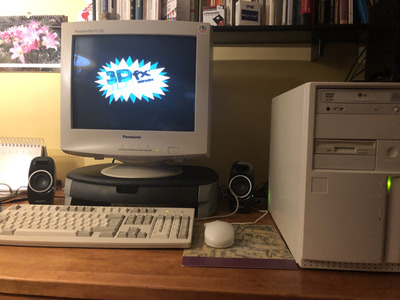Ensign Nemo wrote on 2023-08-02, 17:30:
Shponglefan wrote on 2023-08-02, 17:24:
I have an Asus ProArt display and it won't recognize these modes as 4:3. Which unfortunately makes it not useful for DOS.
I didn't know that. That's good to know.
I also have the Asus ProArt display (PA248QV), and have researched their 4:3 mode, and resolution and aspect ratio handling in more detail.
The way that Asus ProArt goes about HDMI input is:
- if HDMI width <= height in pixels, then Asus ProArt will not sync to the image at all, but will show a black screen. I.e. the display requires that width > height.
- iirc Asus ProArt will not sync to a 320x200 HDMI resolution at all. (it certainly does not sync to 320x400)
- Otherwise it does nicely sync to any arbitrary pixel size resolution, e.g. a random 643x324 pixels from a HDMI signal generator.
- if refresh rate < 50 hz or > 75 hz, it does not sync.
- the 4:3 aspect ratio mode is actually what could be called a "smart 4:3 aspect ratio" mode. If input resolution has aspect ratio < 16:10, then it is shown in 4:3 mode. However, if the input aspect ratio is >= 16:10, then it is hardcoded to show in 16:10 mode.
So for example DOS 320x200, 640x400 and 720x400 modes will all show as 16:10 even when the display is set to 4:3 mode.
I am not 100% sure how much of the above info translates to the VGA input side. I suppose it will genlock to figure out a horizontal pixel resolution from the VGA signal, and then behave the same way as the HDMI side would. Hence DOS 720x400 text mode will show up as 16:10 aspect ratio even when in 4:3 mode.
This "smart 4:3 aspect ratio" mode is actually not totally bad, it can be utilized to some benefit. Though I do wish that Asus would add other aspect ratio modes, like a forced 4:3 mode, as well as a 1:1 mode, a 16:9 mode, and also would sync to pixel resolutions where input width <= height.

